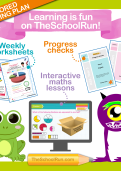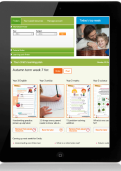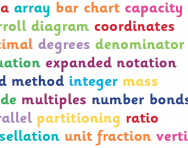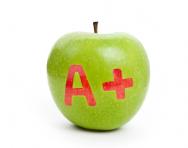11 things parents need to know about the National Curriculum

If your child is between 5 and 16 and in ‘maintained’ or state school, they are being taught the National Curriculum, a document that sets out the subjects and assessment strategy for children in years 1-11. The first version of the National Curriculum was developed the late 80s out of an aim to make learning more balanced and consistent across schools.
It has undergone various tweaks and revisions over the years since, but these are the facts about the curriculum your child is being taught today. You don’t have to be a teacher to understand what’s in it, and having a general knowledge about the National Curriculum can help you better support your child’s learning at home.
1. The National Curriculum includes a list of compulsory subjects that all students must be taught. For Key Stages 1 and 2, these are:


Boost Your Child's Learning Today!
- Get a tailored learning plan for your child
- English & maths resources delivered each week
- Interactive & printable activities
2. Your child may not know exactly what subject they’re learning each day. Although your child will be taught in each of the subject areas, they might not be aware of subject titles like history and science – these could be taught under a different name at their school, and be integrated into other areas. Individual schools can interpret and plan for the curriculum in slightly different ways.
3. Years, stages and levels are not the same thing. Because of this, it can be very confusing for parents to ‘follow along’ with their child’s education from home. For instance, if your child is in year 2 they will also be in Key Stage 1. Then, when they move on to year 3, they will also have moved on to Key Stage 2. This will become clearer as your child progresses through their primary education, but you can also find information about key stages on TheSchoolRun to help you along the way.
4. Children's progress is measured by performance descriptors. Schools can decide what terminology to use, but it will usually be along the lines of 'working towards age expectations,' 'working at age expectations', 'working above age expectations' and 'working at greater depth'. You should be told about the level your child has reached at parent-teacher evenings and/or in their school reports. Remember that children learn at different rates; some children may make lots of progress in a short period of time, and then not for a while – nobody can learn at a consistently steady pace.
5. Children are assessed regularly, not just during SATs. Many parents aren’t aware that teachers carry out regular informal assessments. It’s considered good practice for teachers to revise plans based on the learning that has previously been achieved, so they should always be aware of how far the children have progressed.
6. Literacy involves more than reading and writing. The literacy framework for primary education includes speaking and listening as well, so it’s important to work on these communication skills with your child along with phonics and handwriting.
7. Maths is taught every day. While the order, structure and even names of subject classes vary among schools, the National Curriculum recommends that primary students have a daily maths lesson. Help your child grasp what they’re learning throughout the week with a free maths worksheet or activity.
8. There are three non-statutory subjects outlined in the National Curriculum. Schools are obliged rather than required to teach these. They include Religious Education (RE), Citizenship and Personal, Social and Health Education (PSHE). You have the right to withdraw your child from RE if you choose to do so.
9. The National Curriculum has recently been reviewed. From 2011 until 2014, the Department of Education, an advisory committee and expert panel made up of teachers, academics and business representatives reviewed the National Curriculum for both primary and secondary years. This resulted in a new National Curriculum, which was introduced for Years 1, 3, 4 and 5 in 2014, and Years 2 and 6 in 2015. There are also new-style SATs, which have been taken by Year 2 and Year 6 children since May 2016.
10. Teachers want to involve you in your child’s education. The National Curriculum encourages teachers to promote home learning, so don’t feel that you can’t speak to your child’s teacher about classroom activity or that you’re being too pushy by helping your child with their schoolwork at home.
11. The National Curriculum isn’t the only way to educate. Parents who educate their children at home do not need to be qualified teachers, or follow the National Curriculum (meaning no SATs either). The only requirement they need to meet is to provide full-time education that’s suitable to the age and ability of their children.

Give your child a headstart
- FREE articles & expert information
- FREE resources & activities
- FREE homework help








